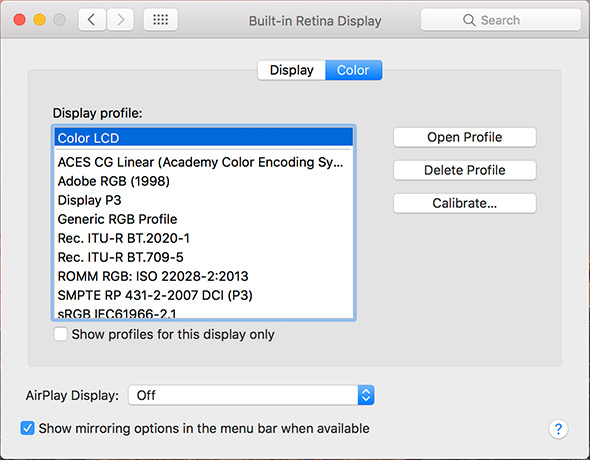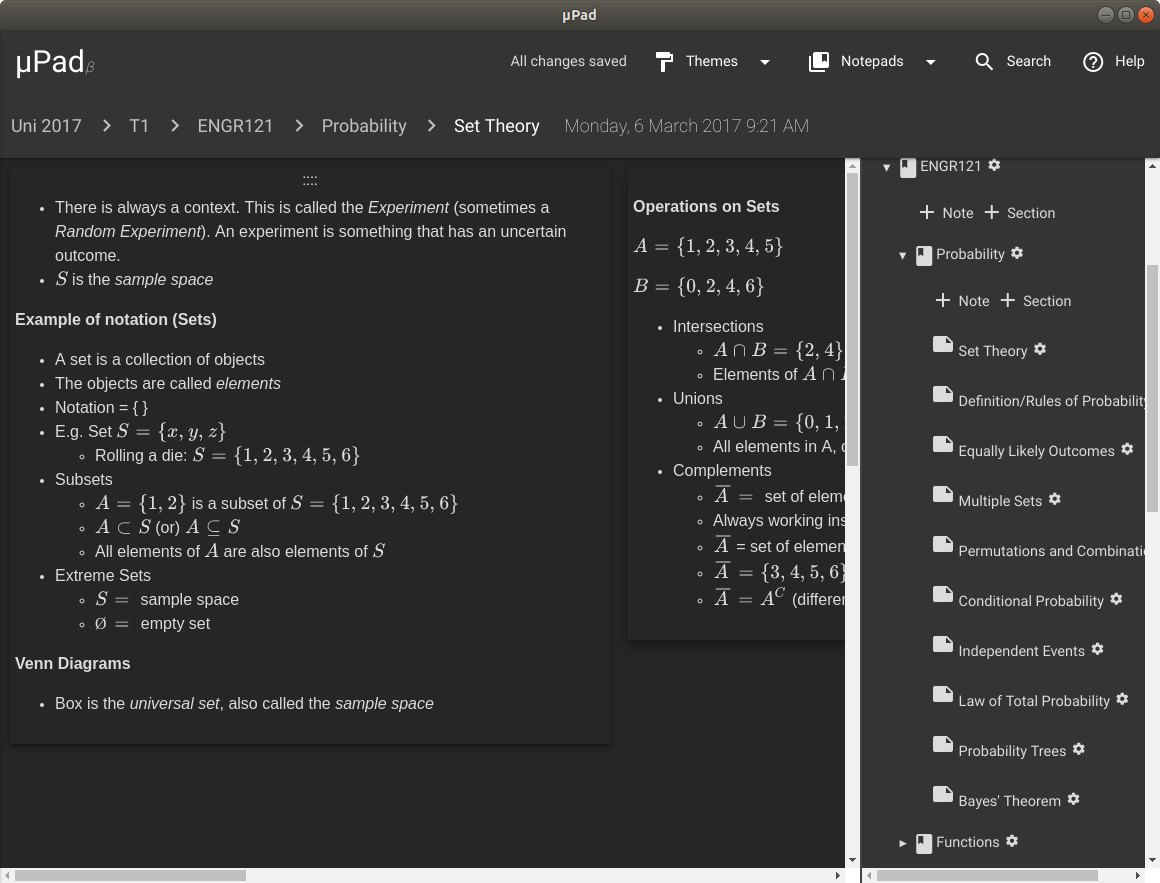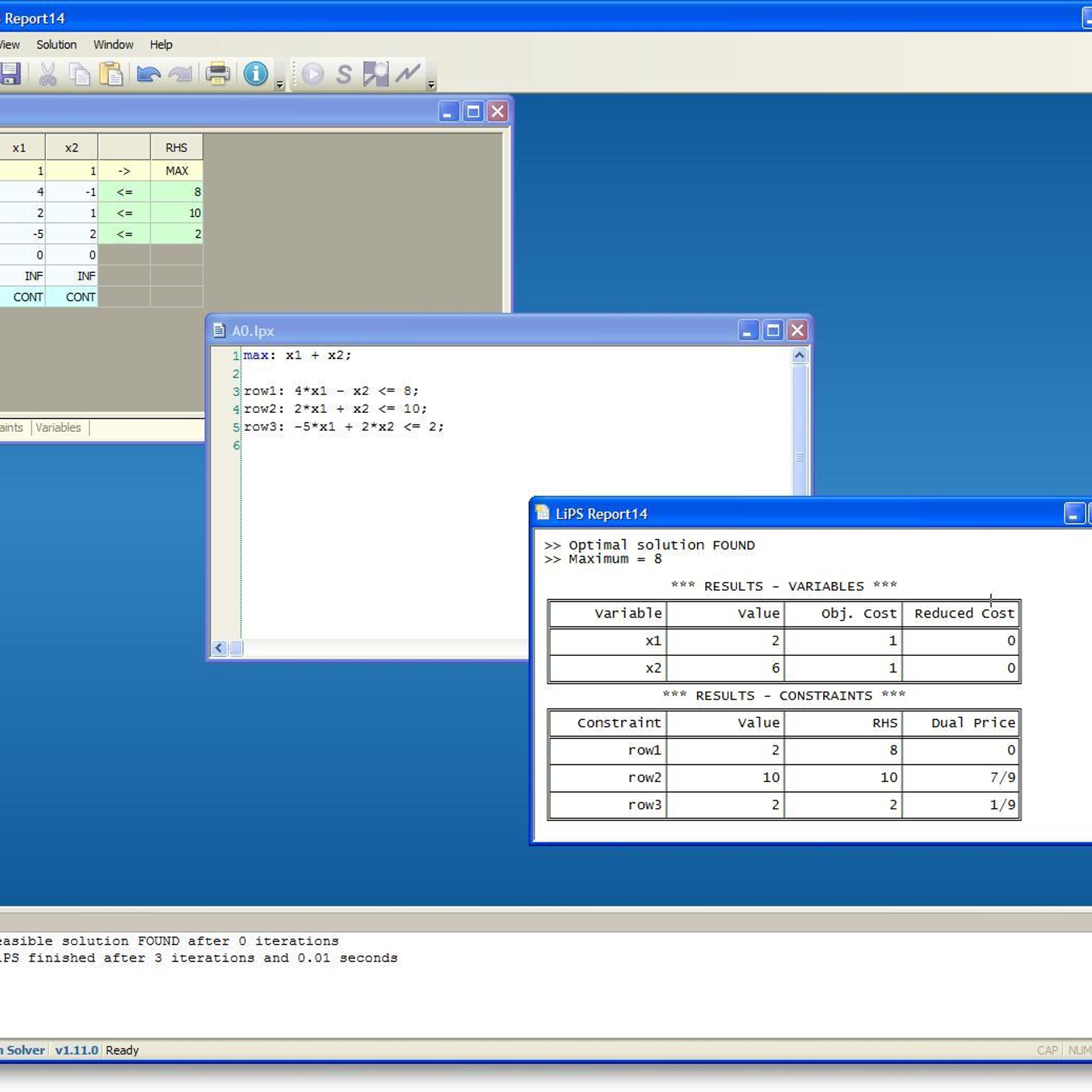- Linear Programming App For Mac Os High Sierra
- Linear Programming App For Mac Os 10.13
- Linear Programming App For Mac Osx
- Linear Programming App For Mac Os Versions
Why programmers think Mac OS X is the best operating system to use; 10 best Mac programming resources for beginners; 10 things every Mac coder should know; 10 tips for new coders; Best Mac for app.
Given a transformation between input and output values, described by a mathematical functionf, optimization deals with generating and selecting a best solution from some set of available alternatives, by systematically choosing input values from within an allowed set, computing the output of the function, and recording the best output values found during the process. Many real-world problems can be modeled in this way. For example, the inputs can be design parameters of a motor, the output can be the power consumption, or the inputs can be business choices and the output can be the obtained profit.
An optimization problem, in this case a minimization problem, can be represented in the following way
- Given: a functionf : AR from some setA to the real numbers
- Search for: an element x0 in A such that f(x0) ≤ f(x) for all x in A.

In continuous optimization, A is some subset of the Euclidean spaceRn, often specified by a set of constraints, equalities or inequalities that the members of A have to satisfy. In combinatorial optimization, A is some subset of a discrete space, like binary strings, permutations, or sets of integers.
The use of optimization software requires that the function f is defined in a suitable programming language and connected at compile or run time to the optimization software. The optimization software will deliver input values in A, the software module realizing f will deliver the computed value f(x) and, in some cases, additional information about the function like derivatives.
In this manner, a clear separation of concerns is obtained: different optimization software modules can be easily tested on the same function f, or a given optimization software can be used for different functions f.

The following tables provide a list of notable optimization software organized according to license and business model type.
Free and open-source software[edit]
- Applications

| Name | License | Description |
|---|---|---|
| ADMB | BSD | a nonlinear optimization framework, using automatic differentiation. |
| ASCEND | GPL | a mathematical modelling chemical process modelling system. |
| CUTEr | GPL | a testing environment for optimization and linear algebrasolvers. |
| GNU Octave | GPL | a software package featuring a high-level programming language, primarily intended for numerical computations; well recognized free alternative to MATLAB. |
| Scilab | CeCILL | a cross-platform numerical computational package and a high-level, numerically oriented programming language with free numerical optimization framework. |
- Software libraries
| Name | License | Description |
|---|---|---|
| ALGLIB | GPL | dual licensed (GPL/commercial) nonlinear optimization library (unconstrained, box, linearly, nonlinearly-constrained, nonlinear and QP problems), optionally using automatic differentiation. Cross-language: C++, C#. |
| COIN-OR | EPL 1.0 | integer programming, linear programming, nonlinear programming |
| Dlib | Boost Software License | Unconstrained/box-constrained nonlinear/QP optimization library written in C++. |
| GEKKO | MIT License | machine learning and optimization of mixed-integer and differential algebraic equations in Python. |
| GLPK | GPL | GNU Linear Programming Kit, C API. |
| IPOPT | CPL | a large scale nonlinear optimizer for continuous systems (requires gradient), C++ (formerly Fortran and C). |
| MIDACO | Dual (Commercial, BY-NC-ND) | a lightweight software tool for single- and multi-objective optimization based on evolutionary computing. Written in C/C++ and Fortran with gateways to Excel, VBA, Java, Python, Matlab, Octave, R, C# and Julia. |
| MINUIT (now MINUIT2) | LGPL | an unconstrained optimizer internally developed at CERN. |
| OpenMDAO | Apache License | a Multidisciplinary Design, Analysis, and Optimization (MDAO) framework, written in Python. The development is led out of the NASA Glenn Research Center, with support from the NASA Langley Research Center. |
| OptaPlanner | Apache License | a Java constraint solver with construction heuristics and metaheuristics. Integrates with Spring Boot and Quarkus. Runs on Kotlin and Scala too. |
| SciPy | BSD | a general numeric package for Python, with some support for optimization. |
Proprietary software[edit]
- AIMMS – optimization modeling system, including GUI building facilities.
- ALGLIB – dual licensed (GPL/commercial) constrained quadratic and nonlinear optimization library with C++ and C# interfaces.
- Altair HyperStudy – design of experiments and multi-disciplinary design optimization.
- AMPL – modelling language for large-scale linear, mixed integer and nonlinear optimization.
- ANTIGONE – a deterministic global optimization MINLP solver.
- APMonitor – modeling language and optimization suite for large-scale, nonlinear, mixed integer, differential and algebraic equations with interfaces to MATLAB, Python, and Julia.
- Artelys Knitro – large scale nonlinear optimization for continuous and mixed-integer programming.
- ASTOS – AeroSpace Trajectory Optimization Software for launcher, re-entry and generic aerospace problems.
- BARON – optimization of algebraic nonlinear and mixed-integer nonlinear problems.
- COMSOL Multiphysics – a cross-platform finite element analysis, solver and multiphysicssimulation software.
- CPLEX – integer, linear and quadratic programming.
- FEATool Multiphysics – FEA GUI Toolbox for MATLAB
- FICO Xpress – integer, linear and quadratic and nonlinear programming.
- FortMP – integer, linear and quadratic programming.
- FortSP – stochastic programming.
- GAMS – General Algebraic Modeling System.
- Gurobi – integer, linear and quadratic programming.
- HEEDS MDO – multidisciplinary design optimization using SHERPA, a hybrid, adaptive optimization algorithm.
- IMSL Numerical Libraries – linear, quadratic, nonlinear, and sparse QP and LP optimization algorithms implemented in standard programming languages C, Java, C# .NET, Fortran, and Python.
- IOSO – (Indirect Optimization on the basis of Self-Organization) a multiobjective, multidimensional nonlinear optimization technology.
- Kimeme – an open platform for multi-objective optimization and multidisciplinary design optimization.
- LINDO - (Linear, Interactive, and Discrete Optimizer) a software package for linear programming, integer programming, nonlinear programming, stochastic programming, and global optimization. The 'What's Best!' Excel add-in performs linear, integer, and nonlinear optimization using LINDO.
- LIONsolver – an integrated software for data mining, analytics, modelingLearning and Intelligent OptimizatioN and reactive business intelligence approach.
- modeFRONTIER – an integration platform for multi-objective and multi-disciplinary optimization, which provides a seamless coupling with third party engineering tools, enables the automation of the design simulation process, and facilitates analytic decision making.
- Maple – linear, quadratic, and nonlinear, continuous and integer optimization. Constrained and unconstrained. Global optimization with add-on toolbox.
- MATLAB – linear, integer, quadratic, and nonlinear problems with Optimization Toolbox; multiple maxima, multiple minima, and non-smooth optimization problems; estimation and optimization of model parameters.
- MIDACO a lightweight software tool for single- and multi-objective optimization based on evolutionary computing. Written in C/C++ and Fortran with gateways to Excel, VBA, Java, Python, Matlab, Octave, R, C# and Julia.
- Mathematica – large-scale multivariate constrained and unconstrained, linear and nonlinear, continuous and integer optimization.
- ModelCenter – a graphical environment for integration, automation, and design optimization.
- MOSEK – linear, quadratic, conic and convex nonlinear, continuous and integer optimization.
- NAG – linear, quadratic, nonlinear, sums of squares of linear or nonlinear functions; linear, sparse linear, nonlinear, bounded or no constraints; local and global optimization; continuous or integer problems.
- NMath – linear, quadratic and nonlinear programming.
- Octeract Engine – a deterministic global optimization MINLP solver.
- OptimJ – Java-based modeling language. Premium Edition includes support for Gurobi, Mosek and CPLEX solvers.
- Optimus platform – a process integration and design optimization platform developed by Noesis Solutions.
- optiSLang – software solutions for CAE-based sensitivity analysis, optimization and robustness evaluation.
- OptiY - a design environment providing modern optimization strategies and state of the art probabilistic algorithms for uncertainty, reliability, robustness, sensitivity analysis,
When you tap into programming the operating system is an essential aspect you should not overlook. Even though an OS should not restrict you from using your preferred language it’s useful to read the options before you make your move.
Over the years people are so confused with all sides of this argument, saying that, “<platform name> is the best or that or this.” So this is an effort to clear the cloud abovve your what is best for your development purpose, this article poses the differences in each platform in relation to general web development.
The competing operating systems are these three: iOS, Linux, & Windows.
But first break down programming in following sections.
(i) Coding Language (C, C++, Python, Java and so on)
Article Contents
- Operating systems for programming
There are many languages to choose when you start coding, it can be any language and since there are a plethora of IDE platforms for Linux based distribution, Microsoft’s Windows and Apple’s Mac OS. It doesn’t matter because people who used Windows for over 5 and more year are coding on Linux and don’t yearn Mac. When your focus is on programming and code writing, you probably won’t like the plethora of background services and multitasking makes it hard to focus on coding. When you use Linux the current app takes the whole place and somehow it manages to put all the focus on a single work; which is coding in your case. When you want a true, monolithic experience in programming, go for Linux. But why stick with Linux when you know coding is not dependent on operating system. You like Windows, use it. If you love Linux, chose any distribution. Do you have a Mac on your desk, nothing wrong to use it?
(ii) Operating System Level
For this category, you have to select dedicated Operating System.
When you’re developing a Windows program (.exe) you must go with Windows as you can test it and more importantly you’ll know how it will work.
Want to Develop Linux then go with Linux Distributions and there is also Many Distributions and their factors are different but target a distribution and learn all things and then Linux will be easy to use.
For developing Mac Apps, using Mac OS is advisable.
Choice That you have.
- Windows use IDEs like Net Beans, Visual Basic, Code Blocks, Dev C++ (and plenty of more to choose from)
- Linux (Ubuntu 18.04) use Code Blocks and Net Beans.
- Android Development is very easy with Android Studio both in Windows and Linux (Ubuntu) no problem there, both are flexible.
Operating System doesn’t matter for programming!
For example, you would be able to run all program including — whether it be C++, Python, Java, Pascal or anything else on every operating system. When you solely want to focus on programming you may want a simple lightweight Operating System and a compiler(or an interpreter) to run your program!
Cross-Platform Features
- Most languages can be developed on any platform
- Most IDE’s and other developer tools are cross-platform (within reason)
- All Platforms (that I know of) can use Git
- Most platforms have the ability to run another platform along-side or within themselves, in some way. (Usually via a 3rd party application)
iOS Features
Linear Programming App For Mac Os High Sierra
- Almost everything is visually well polished
- Things are not free, you’ve got to pay
- You can use Photoshop
- Is POSIX
- Ability to install programs via GUI by default
- Useful apps are pre-installed
- Upgrades to major version every year
- Not large portion of Web servers use this platform, but it is closely related to the most commonly used platform.
Linux Features
- Most things are open source (aka free-for-developers)
- Has a “sink or swim” learning curve (aka not typical-user friendly)
- Has a dozen Photoshop alternatives, but no Photoshop
- Is POSIX
- Typically installs programs via CLI by default (fast)
- Some useful applications pre-installed with minimal bloatware, if any.
- Typically upgrades major version every 1 or 2 years, occasionally less. (easily installed)
- Most servers use some variation of this platform
Windows Features
- Most products/services are designed for this platform
- Has many security issues
- Can use Photoshop
- Is not POSIX
- Installs programs via GUI by default (slow)
- Few useful applications pre-installed. Unless you install the OS, it always has a lot of bloatware.
- Upgrades major version two or three times in a decade, occasionally more/less. (pain in the *** almost every time)
- Some servers use this platform
Features source.
Operating systems for programming
If you choose Linux as your programming operating system then some best Linux distribution is as follows. It’s easy to setup C++ development environment to compile and run using Eclipse IDE. If you’re interested check the following guide.
You’ve seen it’s easy to setup Eclipse (pre-configured for Java) to work with C++ projects. Linux allows a wide range of IDE you can choose from, it all depends on your demands.
Linear Programming App For Mac Os 10.13
For that, you’ll need a Linux Distro that can download from Ubuntu Software store, so the working Distro is Ubuntu, Pop OS, elementary OS, Kubuntu, Lubuntu and so on. Moreover, you can always sideload your favorite IDE on most of the Linux distributions.
1. Pop! OS: is developer focused
Pop OS is developer focused Linux based operating system. The interface is elegant and it’s easy to get used to it compared to Ubuntu or other distributions. It comes preloaded with so many tools for programming and coding that you’ll find yourself tinkering with. One solid pro is that the operating system is around developers, but in fact, anyone who can use Ubuntu would be happy to use this distribution as well.
2. Arch Linux: is the all-you-do type.
The Arch Linux has a wide fan base, it comes with latest Linux Kernel and package manager. It’s easy to install apps using terminal from the app store. With arch Linux, you’ll have to gather things and choose components. You can customize it to make an operating system for programming and development purposes. The Arch community is consist of people having experience in programming, you get the company and help them so no worries.
the operating system is a one-time installation with always up to date bleeding edge distro repository. On every month (first week) you get system update, and you can choose to install them automatically letting you work more on the development and worry less about system stability and security.
Penetration can also be done by converting Arch Linux into BlackArch installation with help of some instructions.
Linear Programming App For Mac Osx
You should use Arch Linux because of its flexibility to adapt to your preference. Especially when you have used a Linux before, don’t you think it’ll be awesome to build a personal system?
3. Windows 10.. Errrr..
Linear Programming App For Mac Os Versions
Windows is widely used, accepted and pirated operating system and you can use it for development and programming purpose. People who choose Linux over Windows always complain about the background process that it runs makes less resource available for programming apps. When you have to work with Visual Studio (Microsoft Azure) windows might be a better and suitable choice. A lot of developers first build Mac apps then make a version for Windows platform, so there is not a big learning curve when you shift from MAC to Windows, as Windows is widely available and you can install it on cheap machines, unlike MAC.
An operating system should not limit you in your coding and compiling tasks. Rather, now you have a better understanding that Linux may offer you a better platform for sharp coding and programming skills. If you’re a company or a team then you acknowledge building a cross-platform is essential for survival, in that case, divide your team to work on different operating system app versions.